

Earwigs, Dermaptera
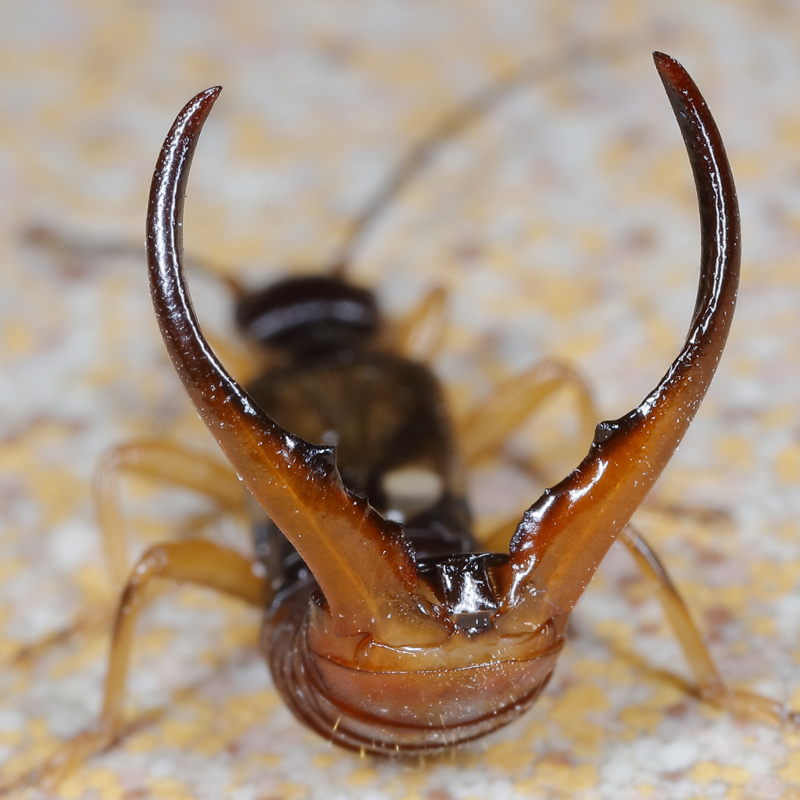
threatening earwig
Introduction
There are five species of earwigs in the Netherlands and another sixth tropical species, which only occurs in some greenhouses in Zeeland and in Blijdorp Zoo. There are about 2000 species around the world, so it is a small family. The group is limited and you can easily distinguish them from each other. I have pictures of all five species and with them alone you can identify them down to the species.
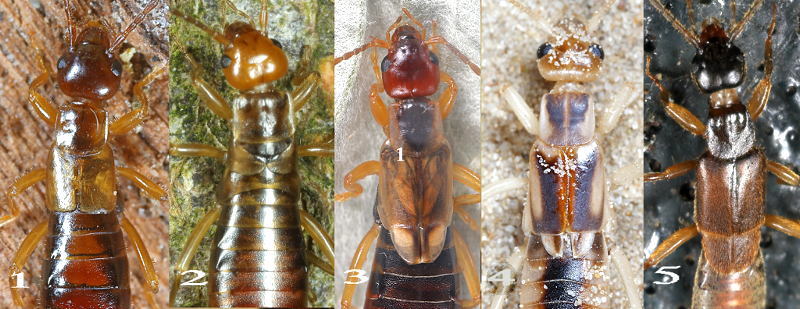
Earwigs
Foto 1. 1-Short-winged or Hop-garden Earwig, 2-Forest Earwig, 3-Common Earwig, 4-Giant or Tawny Earwig, 5-Lesser Earwig.
Pay particular attention to the differences in the wings
You can find a lot of information at Earwig wiki.
The first time I see a mating is on 8 October 2021 they are under a leaf against the window of the greenhouse. They lie in line with each other and belly to belly. This is easy because they normally stay in spaces where they are completely enclosed. In this case, the male is holding on to one side of the space, the glass, the female on the other side, the leaf. Normally you would only be able to see and photograph this when you open up the space, but they will not wait for that. I am lucky that the space they have chosen for mating is under a leaf that is pressed against the window. This way, I can take pictures through the glass without disturbing them.

Common Earwig, Forficula auricularia mating
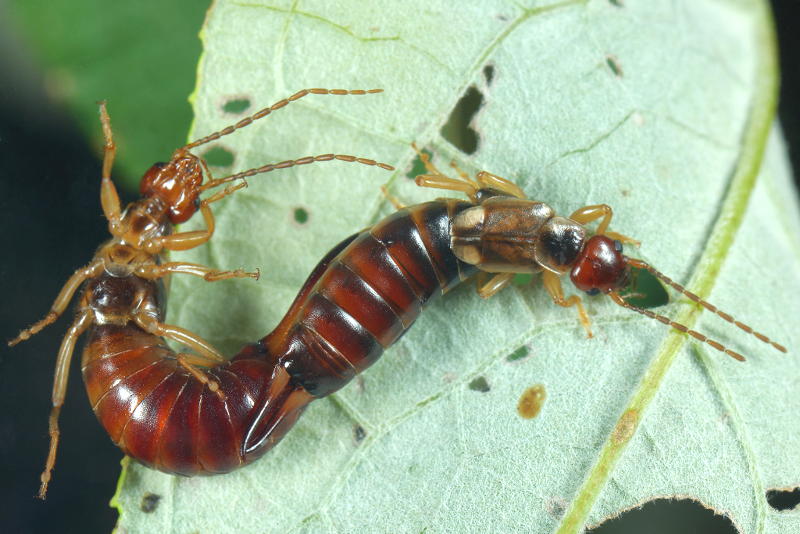
Common Earwig, Forficula auricularia mating
Earwigs lay eggs and the female takes care of the eggs and newly hatched young, something that is rare in insects. There are even species of earworms where the female will fetch feed for the young, the Dutch species do not.
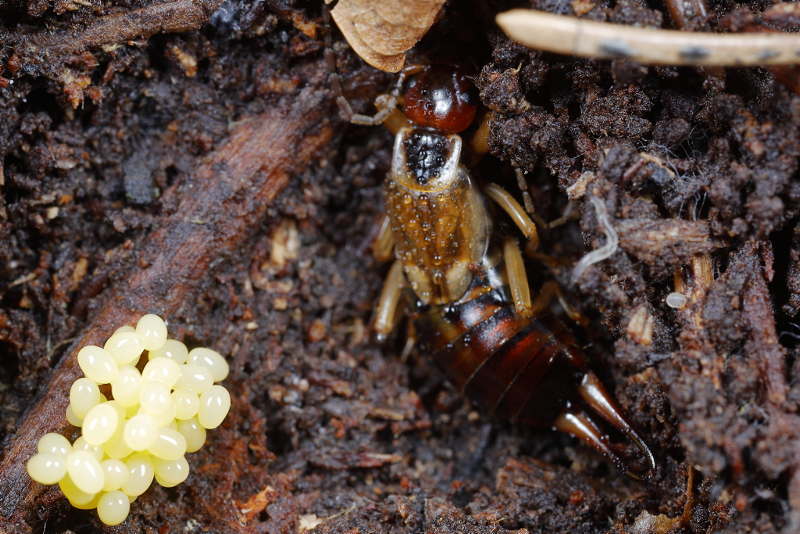
Common Earwig, Forficula auricularia ♀ with eggs
The nymphs already look a bit like the adult animals and with every subsequent moult they look more like it. Below a number of photos of nymphs, so young earwigs. What is particularly striking about the youngest animals, is that the head is relatively large and the pincers at the end of the body are two thin wires, with which the nymphs, if they feel threatened, is going to threaten, just like the adult animals. These pincers are usually different in males than in females. They can pinch with the pincers. This is not really painful, you can keep them quietly in your hand.
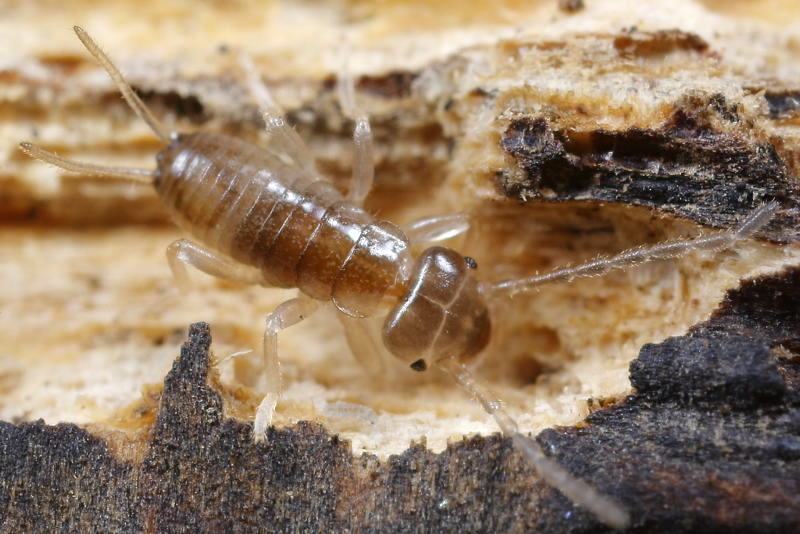
earwig nymph
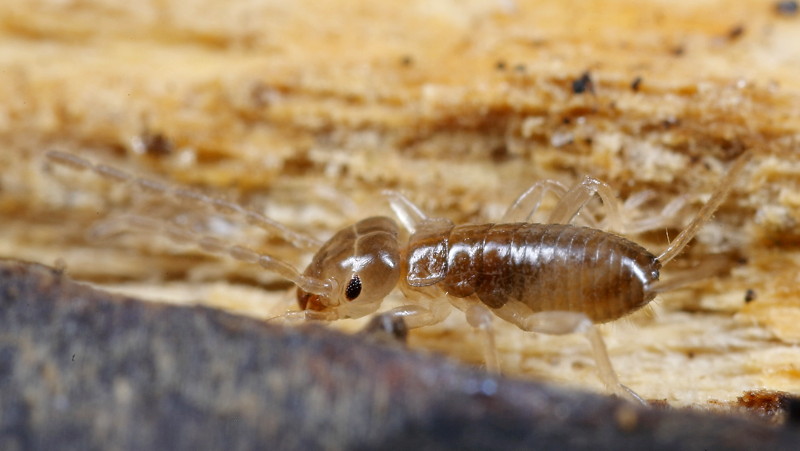
earwig nymph
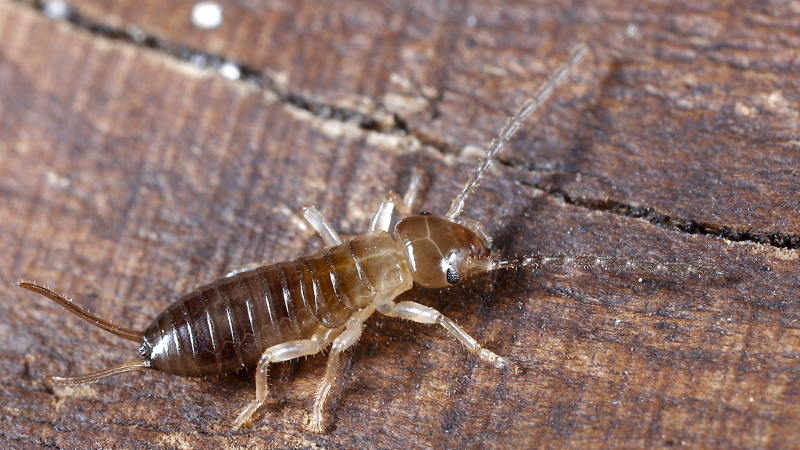
earwig nymph
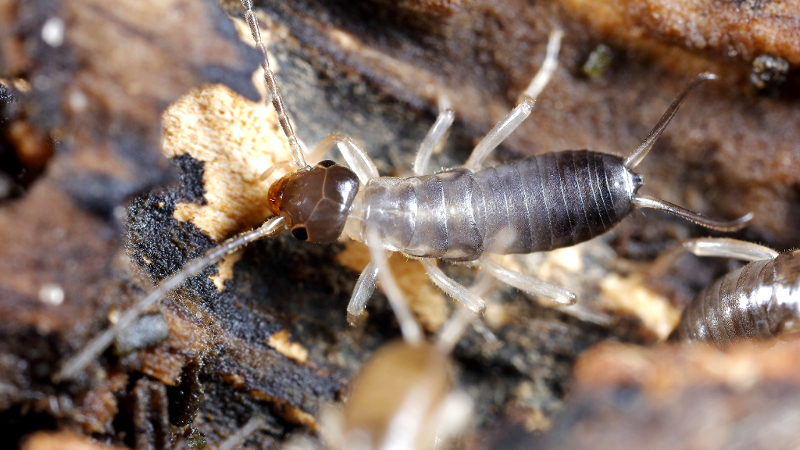
earwig nymph
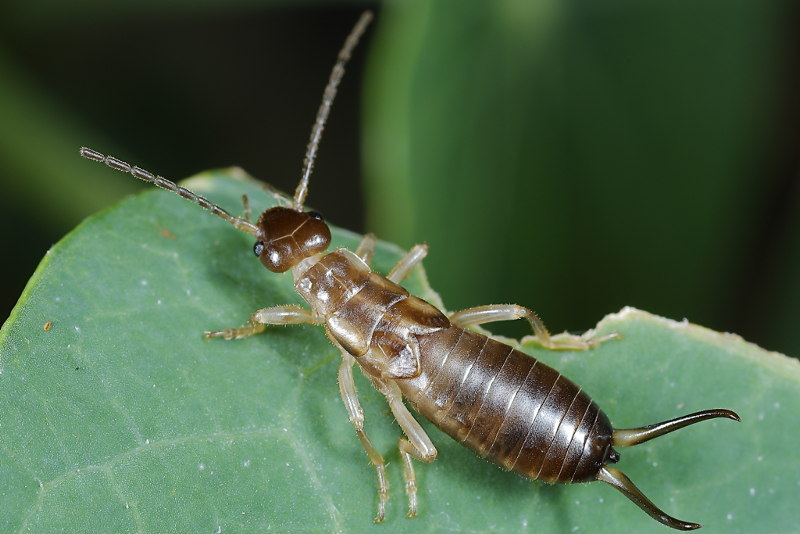
earwig nymph

earwig nymph
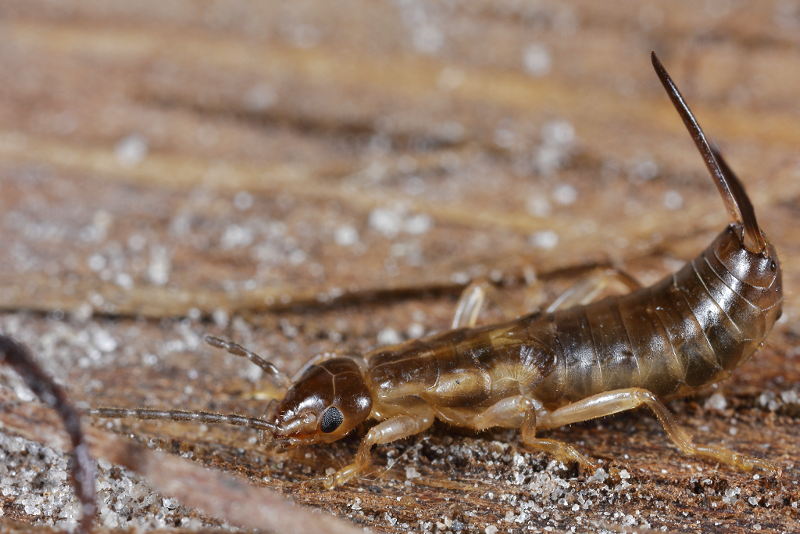
earwig nymph
Earwigs are nocturnal animals, they have to, because they are tasty snacks for many animals, among other birds, mammals, amphibians and reptiles. They themselves eat soft plants and soft insects such as aphids. During the day they hide and prefer to have the whole body against the environment, so in cavities where they fit exactly. In autumn they often sit in the flowers of dahlias. Not everyone likes that but in total they are useful animals that sometimes destroy a flower but by eating aphids again prevent greater damage.

longbodied cellar spider eats earwig
Earwigs sometimes fall victim to a fungus, Entomophthora forficulae Giard 1889

Common Earwig killed by mould
Overview species
- family: Forficulidae, 3 species in The Netherlands
- Apterygida media (Hagenbach, 1822) - Short-winged or Hop-garden Earwig
- Chelidurella guentheri Galvagni, 1994 - Forest Earwig
- Forficula auricularia Linaeus, 1758 - Common Earwig
- family: Labiduridae, 1 species in The Netherlands
- Labidura riparia (Pallas, 1773) - Giant or Tawny Earwig
- family: Spongiphoridae, 1 species in The Netherlands
- Labia minor (Linnaeus, 1758) - Lesser Earwig
Short-winged or Hop-garden Earwig, Apterygida media
This is a small earwig, I found it in a piece of rotten wood that I broke apart with my fingers, I saw a small earwig running away and I could just catch it, because when he walked over the edge, he naturally fell off. It is, in my opinion, a rather rare species that I do not often encounter. It is the only species where no wing tips protrude behind the rectangular wing scales.

Short-winged or Hop-garden Earwig, Apterygida media ♂
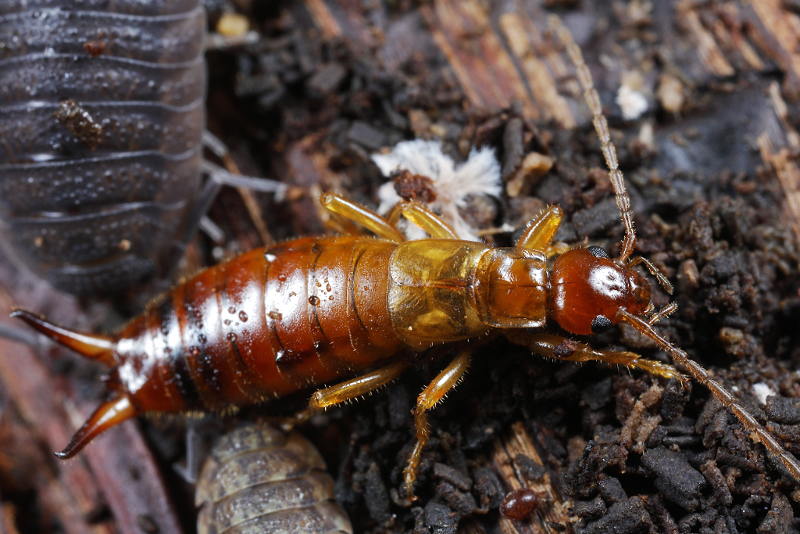
Short-winged or Hop-garden Earwig, Apterygida media ♀
Forest Earwig, Chelidurella guentheri
To date, I only find this species on beech logs. The adult insect has no wings, you only see a few lobes, so no rectangular cover wings. It used to be thought that this was the species Chelidurella acanthopygia and so, he is also still in older determination work. However, it has been found that the species occurring in the Netherlands is Chelidurella guentheri.
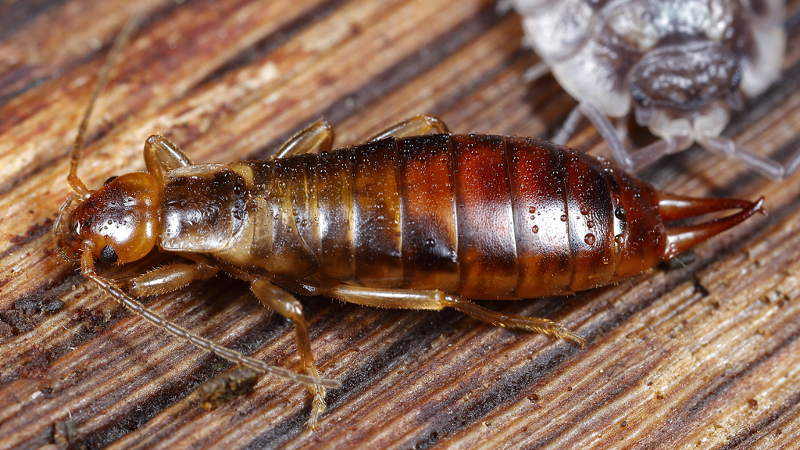
Forest Earwig, Chelidurella guentheri ♀

Forest Earwig, Chelidurella guentheri ♂
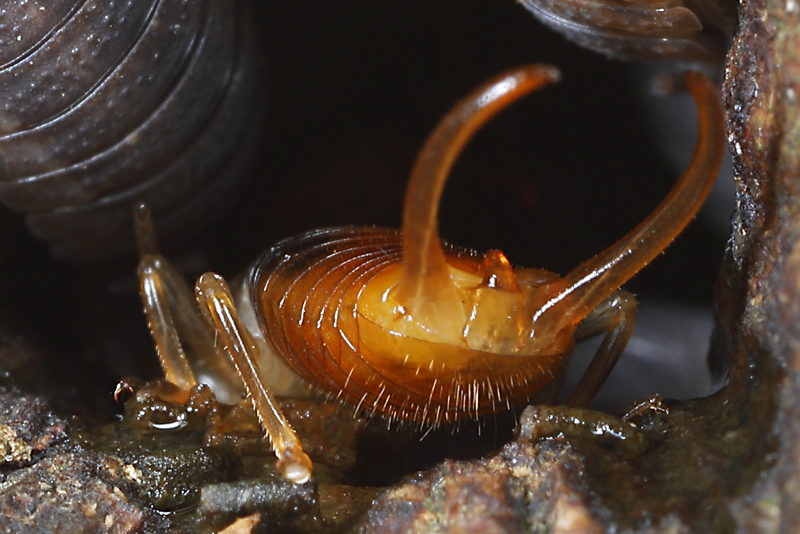
Forest Earwig, Chelidurella guentheri ♂
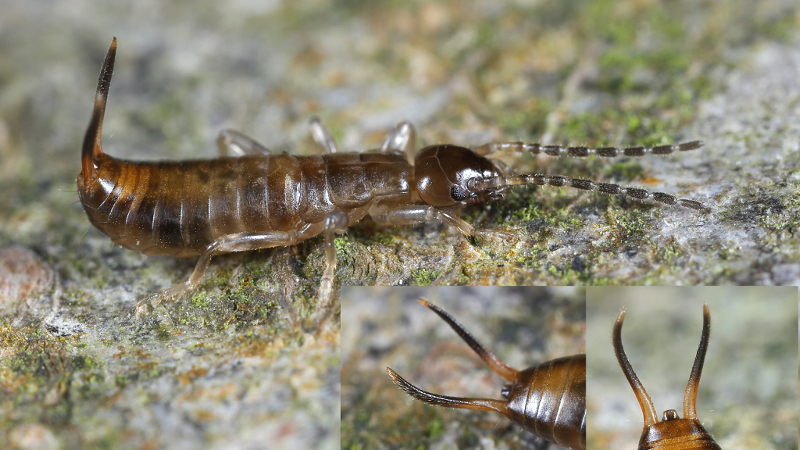
Forest Earwig, Chelidurella guentheri nimf
Common Earwig, Forficula auricularia
By far the most common species is the Common Earwig, you sometimes see this in quite large numbers in the garden between all kinds of material, if it has narrow gaps where it can creep in between. In gardens are often hung upside-down stone flowerpots filled with hay, as a shelter for the earwigs that are known as exterminators of the aphids.

Common Earwig, Forficula auricularia ♂
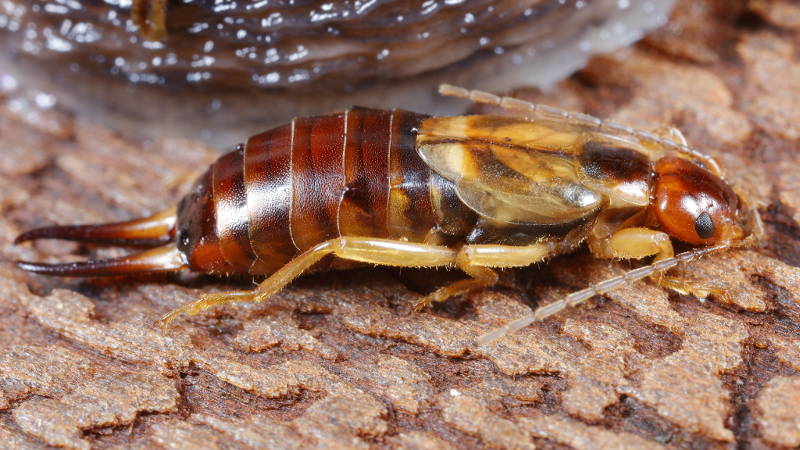
Common Earwig, Forficula auricularia ♀
Giant or Tawny Earwig, Labidura riparia
This Giant or Tawny Earwig is really large, 20 tot 30 mm long. You only find him on sandy plains, on the Veluwe and on the caost in Zeeland. To find him is a matter of turning thick branches on the sand and looking closely, often only a small piece of the body protrudes from the sand.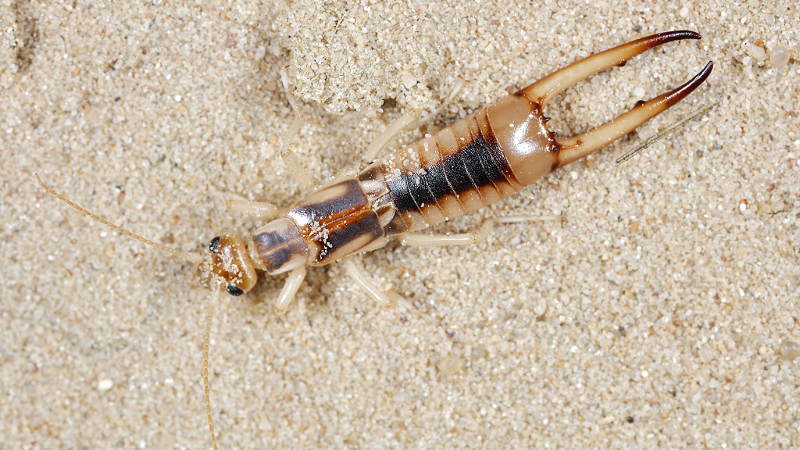
Giant or Tawny Earwig, Labidura riparia ♂

Giant or Tawny Earwig, Labidura riparia nimf
Lesser Earwig, Labia minor
This species is not much reported on waarneming.nl and most observations have been done on light falls. So this is a flying species, what the other species of earwigs do not often do or even can not do because the wings are missing, like at the Forest Earwig.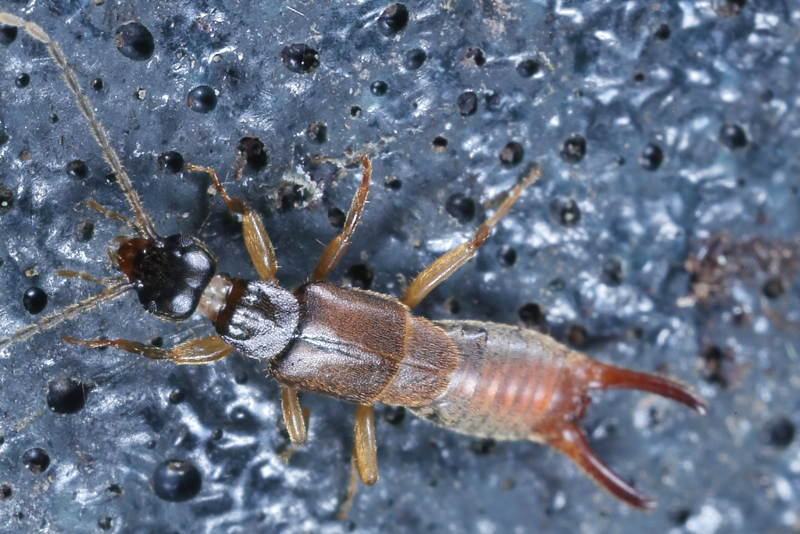
Lesser Earwig, Labia minor ♂

Lesser Earwig, Labia minor ♀